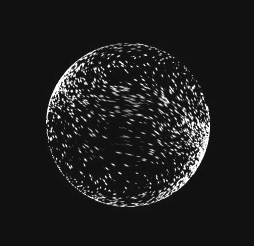cas/definition.php (people or term)

Phase Space
Phase space is an abstract concept that refers to all possible behaviors available to an agent within a complex system.
Related to Degrees of Freedom.
Phase space is a concept that attempts to capture the range of all possible options for degrees of freedom or parameters of behavior. The number of parameters available becomes the 'dimension' of phase space, or its Degrees of Freedom. The ways in which an agent behaves in phase space is initially random, but over time past behaviors begin to shape phase space (Feedback) so that certain behaviors become more likely – this ‘weighted’ phase space is now better understood as a fitness landscape random, but over time past behaviors begin to shape phase space (feedback loops) so that certain behaviors become more likely – this ‘weighted’ phase space is now better understood as a Fitness Landscape.
To illustrate, we can imagine a scrabble board overlaid with randomly placed tiles. We might permit tiles to be placed anywhere along the horizontal axis of one row on the board (one degree of freedom), or extend the placement possibilities to include all rows along the vertical axis of the board (two degrees of freedom) or extrude to include the vertical space occupied when tiles are stacked one on top of another (three degrees of freedom). Given that tiles are imprinted with letters, we might also select which letter will be displayed in any given position (four degrees of freedom). Each degree of freedom has its own limit range, or boundaries. Thus, the number of squares (on the x/y axis) of the board creates limits, as does the viable stacking height (perhaps before the tiles fall), as well as the range of possible letters (A-Z). Hence, while the overall phase space of possible placement configurations is bounded, the board still offers an almost infinite range of potential placement manifestations.*
(*this text is an excerpt from a paper by Sharon Wohl – Sensing the City :Legibility in the Context of Mediated Spatial Terrains, Published in Space and Culture, 2018)
Cite this page:
Wohl, S. (2022, 10 June). Phase Space. Retrieved from https://kapalicarsi.wittmeyer.io/definition/phase-space
Phase Space was updated June 10th, 2022.
Nothing over here yet
Navigating Complexity © 2015-2025 Sharon Wohl, all rights reserved. Developed by Sean Wittmeyer
Sign In (SSO) | Sign In
Related (this page): Parametric Urbanism (10), Non-Linearity (26), Assemblage Geography (20), Remove Virtual (150), Open Scaffolds (104), Manifold (82), Degrees of Freedom (78), Contingency (117), BOOK: Signs of Life: How complexity pervades Biology (106), Bifurcations (81), Affordances (105),
Section: terms
Non-Linearity Related (same section): Related (all): Urban Modeling (11, fields), Resilient Urbanism (14, fields), Relational Geography (19, fields), Landscape Urbanism (15, fields), Evolutionary Geography (12, fields), Communicative Planning (18, fields), Assemblage Geography (20, fields), Tipping Points (218, concepts), Path Dependency (93, concepts), Far From Equilibrium (212, concepts),
Nested Orders Related (same section): Related (all): Urban Modeling (11, fields), Urban Informalities (16, fields), Resilient Urbanism (14, fields), Self-Organized Criticality (64, concepts), Scale-Free (217, concepts), Power Laws (66, concepts),
Emergence Related (same section): Related (all): Urban Modeling (11, fields), Urban Informalities (16, fields), Urban Datascapes (28, fields), Incremental Urbanism (13, fields), Evolutionary Geography (12, fields), Communicative Planning (18, fields), Assemblage Geography (20, fields), Self-Organization (214, concepts), Fitness (59, concepts), Attractor States (72, concepts),
Driving Flows Related (same section): Related (all): Urban Datascapes (28, fields), Tactical Urbanism (17, fields), Relational Geography (19, fields), Parametric Urbanism (10, fields), Landscape Urbanism (15, fields), Evolutionary Geography (12, fields), Communicative Planning (18, fields), Assemblage Geography (20, fields), Open / Dissipative (84, concepts), Networks (75, concepts), Information (73, concepts),
Bottom-up Agents Related (same section): Related (all): Urban Modeling (11, fields), Urban Informalities (16, fields), Resilient Urbanism (14, fields), Parametric Urbanism (10, fields), Incremental Urbanism (13, fields), Evolutionary Geography (12, fields), Communicative Planning (18, fields), Rules (213, concepts), Iterations (56, concepts),
Adaptive Capacity Related (same section): Related (all): Urban Modeling (11, fields), Urban Informalities (16, fields), Tactical Urbanism (17, fields), Parametric Urbanism (10, fields), Landscape Urbanism (15, fields), Incremental Urbanism (13, fields), Evolutionary Geography (12, fields), Feedback (88, concepts), Degrees of Freedom (78, concepts),
